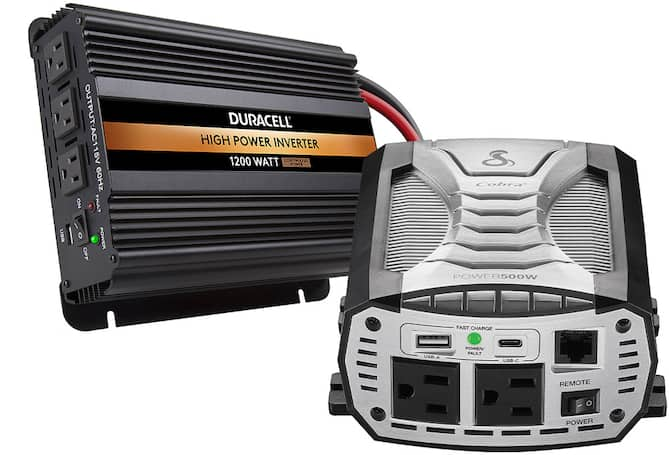Choosing the Right Power Inverter for your Car or Truck

carousel
If you’re gearing up for a road trip or want to use devices on the road, a power inverter for your car or truck can help you transform battery voltage into energy for your tools. But it all depends on your vehicle and the devices you’re planning to power.
Before getting into the details, it’s important to remember that any time you’re dealing with electricity, there are inherent risks, including fire and electrocution. You should never use tools, inverters or vehicle power in ways that strain the system or do not comply with device instructions.
Additionally, if you are seeking to power a device larger than a laptop through an inverter, you will want to speak with a professional. There are many requirements to calculate, such as wattage and amp time, that you’ll need to know to use your inverter safely and effectively.
Let’s go over the basics of using a power inverter.
Inverters for small devices
Inverters with 400 watts are usually enough to charge small electric devices, such as phones or laptop computers. Still, it won’t be enough energy for items with more extensive amp needs, such as space heaters and power tools.
Starter batteries (the main batteries in gas-powered cars and trucks) are not ideal for powering significant energy demands for extended periods of time. Because these batteries are designed to provide a lot of energy very quickly (to start the engine), they’ll need to slowly recharge before being at full capacity again.
Additionally, starter batteries are intended to be discharged only 10%. Releasing more than that will put your car battery below 90% and reduce its lifespan significantly. Note: this estimate can vary depending upon your specific vehicle battery and its current condition.
Generally, you should not use an inverter larger than 400 watts with a car or truck starter battery. So, if your only power source is your car’s starter battery, you won’t be able to operate power tools with your inverter.
Inverters for large devices
There are many inverters designed to power more energy-consuming tools, but you may need more than your vehicle’s standard power system.
First, you’ll need to convert the power requirements from one device to the other. Most inverters provide information on wattage and voltage, but most power tools give you details on amps and voltage. You can estimate wattage requirements by multiplying amp needs by voltage needs.
For most power tools, the watt requirements are only for running the device, and the wattage for starting up can be much higher (surge power). And some tools, like compressors, have a longer surge time than many other power tools and should be paired with a very large inverter (and significant battery power) to operate well. You’ll also need to calculate amp hours to know how long you can use certain tools.
As you can see, the energy needs for substantial tools quickly outpace the ability of your vehicle battery. So, if you want to use an inverter in the field for power tools, heaters, or other energy-intensive equipment, you’ll need to get your power from deep cycle batteries. These batteries provide power for long periods and are designed to be recharged frequently. Plus, they can be discharged up to 50% and retain their lifespan.
Most people who use deep cycle batteries to power equipment create a battery bank by stringing multiple batteries together. If this is what you plan to do, you will want to work with an expert and ensure that all the batteries you use are the same type, size, and age. There are many precautions to consider, such as placing a fuse on the positive side connection to prevent electrical fires and endangerment. So, do not attempt this if you do not have considerable knowledge and experience.